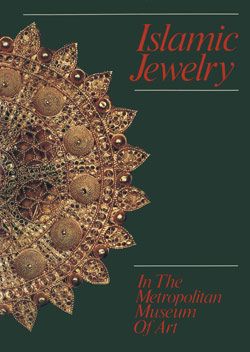Brooch Decorated in the Thewa Technique
Not on view
This piece, now a brooch, was originally part of a gold armband, where it formed the center of three similar elements. The technique used to create it, in which a hunting scene carved in gold overlays a transparent emerald green surface, seems limited to a group of enamels associated with Partabgarh, in northwest India. Extant pieces of this type all appear to have been made in the nineteenth century, although the technique – which has been used also for larger objects, such as boxes and trays, and in other colors, such as red and amber – may have existed earlier. The spiky, hollow balls that surround the central oval echo an ancient form in which closely packed conical (rather than the more common spherical) elements project outward to give a hedgehoglike effect: the parallel between this technique and that used in goldwork of the second century B.C. is striking.
This image cannot be enlarged, viewed at full screen, or downloaded.
This artwork is meant to be viewed from right to left. Scroll left to view more.





